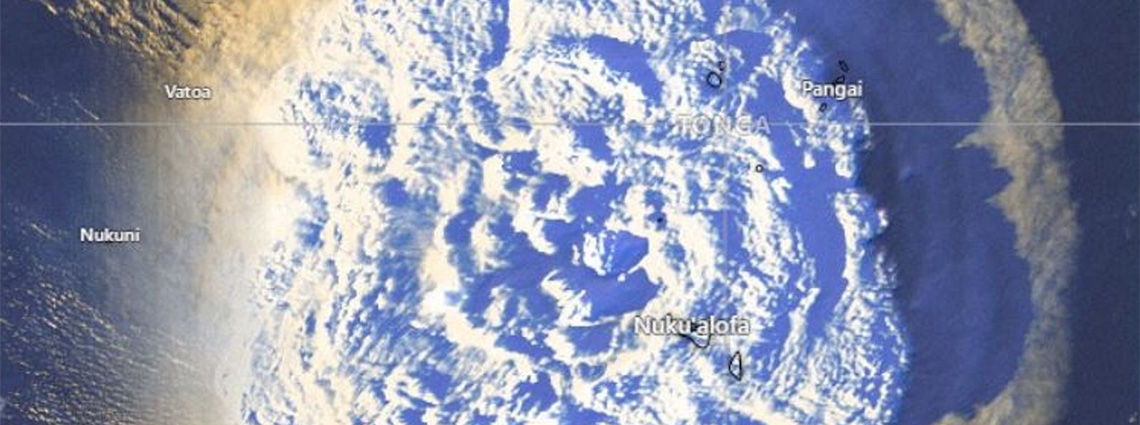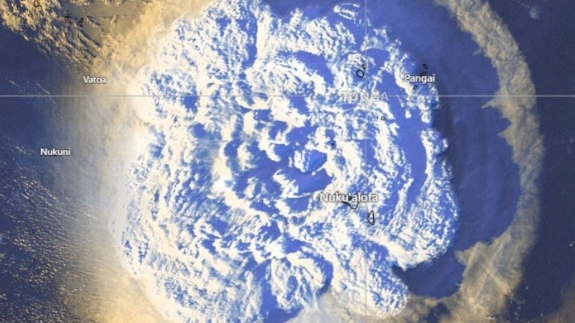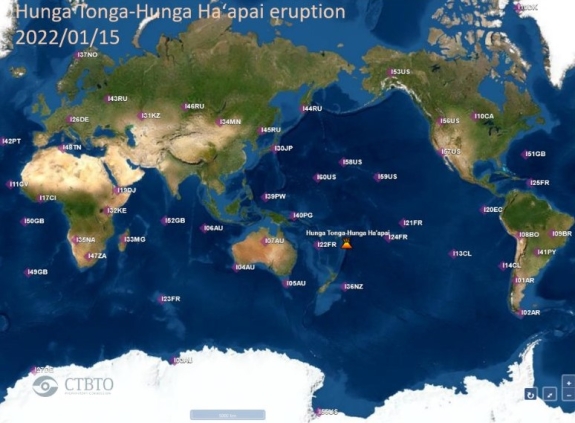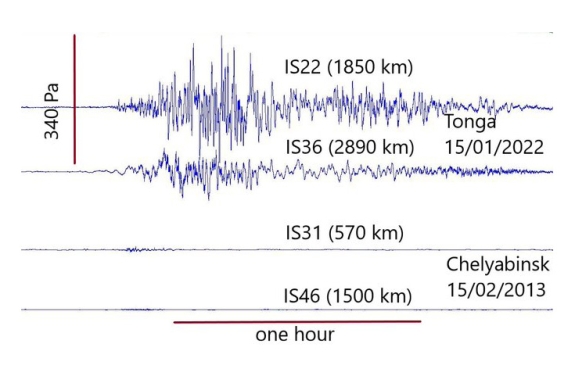Beyond nuclear test detection: CTBTO and Hunga Tonga-Hunga Ha’apai eruption
In the southwestern region of the Ring of Fire, around the edges of the Pacific Ocean, lies the Tongan archipelago, a volcanic area made up of some 170 small islands.
Among these islands are Hunga Tonga and Hunga Ha’apai, which together form the active submarine volcano Hunga Tonga-Hunga Ha’apai.
On 15 January 2022, this volcano experienced an extraordinary eruption – making headlines not just for its sheer force but also for setting a historical precedent.
Scientists who studied the explosion using various satellite imagery and data determined that it produced the highest volcanic plume ever recorded. This plume injected an extraordinary volume of water into the stratosphere, potentially causing a temporary warming effect on the atmosphere.
Additionally, the sound of this monumental event travelled multiple times around the world, remaining detectable above background noise hours after the eruption.
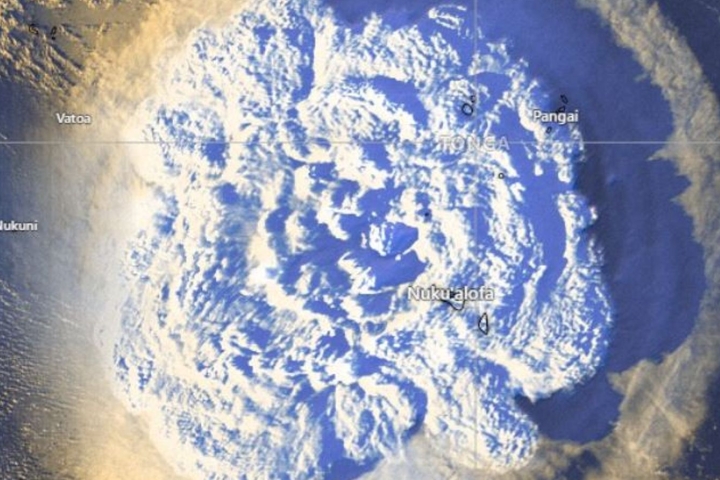
Satellite image of Hunga Tonga-Hunga Ha’apai erupting on 15 January 2022 (Source: Stuart Rankin via Flickr)
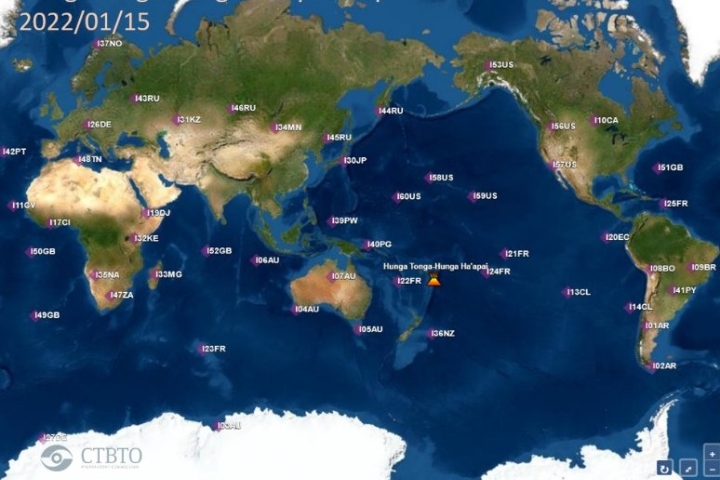
Map of all 53 CTBTO infrasound stations detecting Hunga Tonga-Hunga Ha’apai’s eruption
Contributions to Volcanic Event Monitoring
The Comprehensive Nuclear-Test-Ban Treaty Organization (CTBTO)’s International Monitoring System (IMS) played a crucial role in documenting this massive eruption, capturing data both before and after the event. All data was transmitted to the International Data Centre (IDC) in Vienna, Austria.
Months before the eruption, the system’s strategically placed stations detected hydroacoustic signals in the ocean and infrasound signals in the atmosphere, indicating volcanic activity.
Following the eruption, various acoustic and acoustic-gravity waves travelled through the atmosphere and were recorded by all 53 of the IMS’s infrasound stations.
The CTBTO network also recorded the seismic vibrations caused by the volcanic blast.
This extensive monitoring not only highlighted the eruption's intensity but also demonstrated the IMS’s capability to provide accurate data during such natural events.
Mark Prior, the Head of the Scientific Methods Unit at IDC said: “The data gathered from this once-in-a-lifetime event is an invaluable resource for scientists and researchers seeking to understand similar phenomena.”
The data generated from this event can also be applied to research in mitigating and adapting to climate change, enhancing disaster resilience, and promoting disaster risk management, contributing to the Sustainable Development Goals (SDGs), including SDG 11.
Broad Impact: Tsunami and Unprecedented Scale
The impact of the 2022 eruption extended beyond seismic waves alone, triggering a significant tsunami that reached distant shores in Japan and Peru.
In comparison, the scale of this event dwarfed even the record-breaking Chelyabinsk meteor incident of 2013, which was detected by 20 of CTBTO’s infrasound stations.
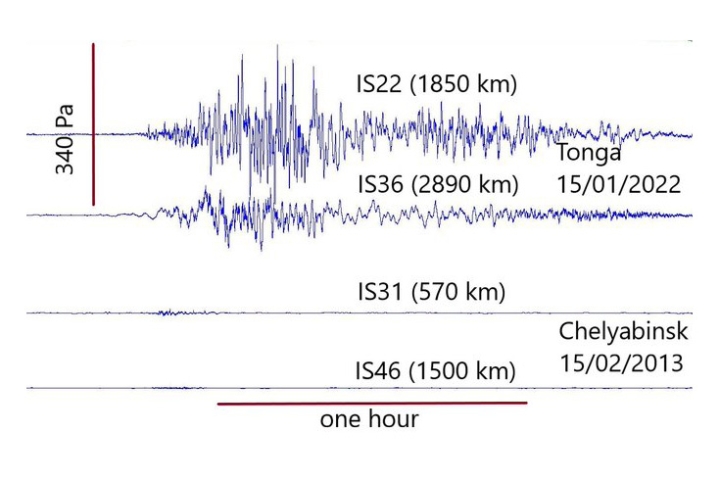
Waveform graphics of infrasonic signals of Tonga Hunga-Tonga Ha’apai eruption in comparison to Chelyabinsk meteor

Analysts at work in International Data Centre (IDC) Operations Centre
CTBTO's Data: Beyond Nuclear Detection
While CTBTO’s IMS facilities are primarily designed to detect nuclear test explosions, the data they gather also serves crucial civil and scientific purposes.
This data and analysis, accessible through the virtual Data Exploitation Centre (vDEC) platform, is available not only to Member States but also to experts in academic and scientific institutions.
CTBTO's data has also led to significant discoveries, such as identifying a new population of Pygmy blue whales, and has supported high-risk areas with early warning data for earthquakes and tsunamis.
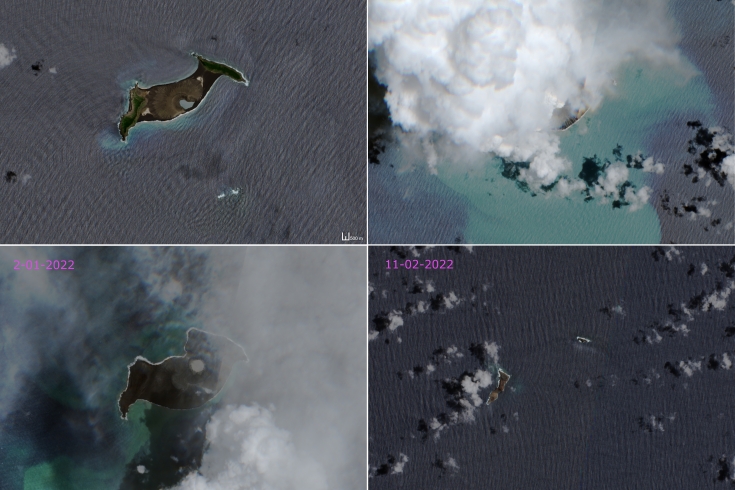
Comparison of satellite images depicting Hunga Tonga-Hunga Ha’apai before and after eruption (Source: Miguel Masegosa via Flickr)
24 Jun 2024
